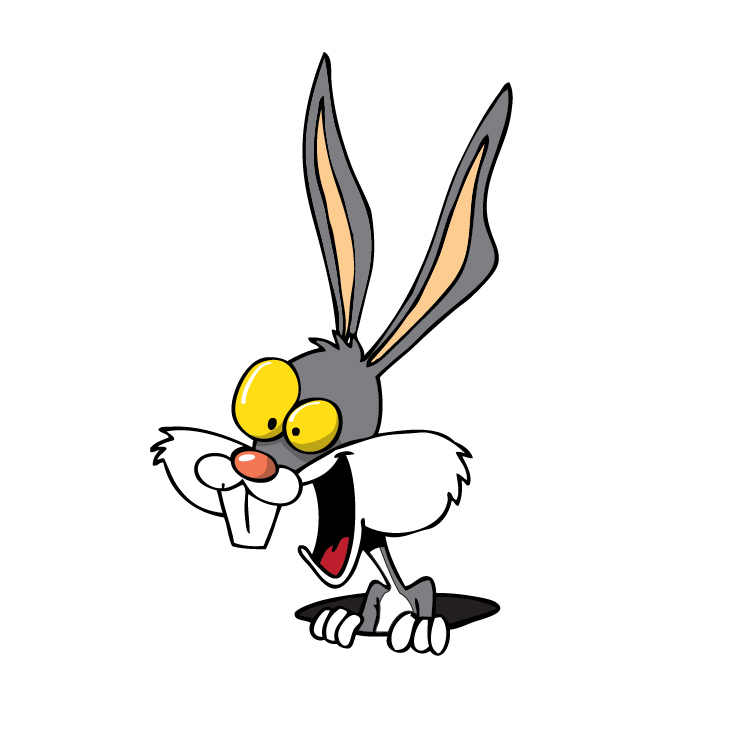
Four generations of Americans have grown up watching Bugs Bunny’s antics in short films or Saturday morning cartoons. Savvy viewers may recognize similarities between the famous cartoon character and Brer Rabbit, another figure who uses cunning and clever wits to outsmart antagonists. Yet even the Brer Rabbit tales have much older origins and parallels. Legends from African cultures and Indigenous civilizations all over the Americas are populated with trickster rabbits who knew how to one-up their competition.
Long-Eared African Tricksters
Encyclopedia.com describes African trickster entities as beings with incredible transformative powers, bridging the sacred with the common. Tricksters employ their mischief skills to help others, foil someone’s plans, or achieve their own ends. The most famous African trickster is Anansi the Spider, originally from Ashanti folklore.
Meanwhile, trickster lagomorphs appear in folklore from all over Africa. In Zambian legends, the antics of Kalulu the rabbit are annoying and helpful by turns. One story shows Lion, the reigning forest ruler, ordering that all old and sickly animals be put to death. While Lion intended to reserve food and space for younger and stronger beings, the elder rabbit Kalulu hid in a cave to avoid the slaughter. When Snake crawls into Lion’s throat and refuses to leave, Kalulu comes to the feline’s aid. With a contrived ritual and a freshly captured mouse, he lures Snake out. When Lion asks Kalulu how to reward him, the rabbit simply requests that elderly and infirm animals be spared execution.
A Great Rabbit Creator
Trickster rabbits also exist in American Indigenous cultures. Nanabozho is one example, originally from the tales of Anishinaabe civilizations such as the Algonquin, Cree, Potawatomi, and Ojibwe. Nanabozho is a life-giving person and force, with various stories crediting this entity with reshaping a post-diluvian world and crafting rainbows.
Like many tricksters, Nanabozho can shapeshift and change genders. Some sources, including the Canadian Encyclopedia, refer to this entity with both masculine and feminine pronouns. One of Nanabozho’s alternate forms is Mishaabooz, also referred to as Manabush the Great Rabbit. One Menominee story describes how day and night came to be. To determine whether day or night would prevail, Manabush repeatedly shouted “light, light” while Owl shouted, “night, night.” When Owl mistakenly shouted “light,” he lost the contest. Out of fairness to nocturnal creatures, Manabush decided to split the hours equally into day and night.
Brer Rabbit and Bugs Bunny
African trickster rabbit tales eventually came to the Americas in new forms. Elements of Brer Rabbit’s stories share similarities with Anansi’s fables, but the National Humanities Center explains that Brer Rabbit came to life within African American folklore in the Deep South. Since slaves were not permitted literacy, their oral traditions were key in transmitting these narratives. Brer Rabbit often bested his antagonists, reflecting how slaves endured oppression while fighting back in both subtle and overt ways.
With the well-established history of folklore figures like Brer Rabbit and Kalulu, it’s not hard to see similarities in modern characters such as Bugs Bunny. One Redditor referred to him as a “Karmic Trickster,” who TV Tropes describes as “specializes in unstuffing stuffed shirts, deflating puffed-up egos, trivializing the self-important, and confusing know-it-alls.” The entry later states that Bugs was partially based on Brer Rabbit. That’s no surprise, given Bugs’ penchant for outsmarting everyone from Elmer Fudd to Daffy Duck.
What the Trickster Rabbit Teaches Us
Our ancestors studied the world around them, including animal behaviors, to learn important lessons. Like their real-life counterparts, trickster rabbits display cunning, wit, and swift speed. Such valuable qualities can outsmart enemies, achieve noble ends, and thwart oppression. Even in the 21st century, we can gain inspiration from these tales to cope with minor troubles, unexpected struggles, or even unjust conditions.

